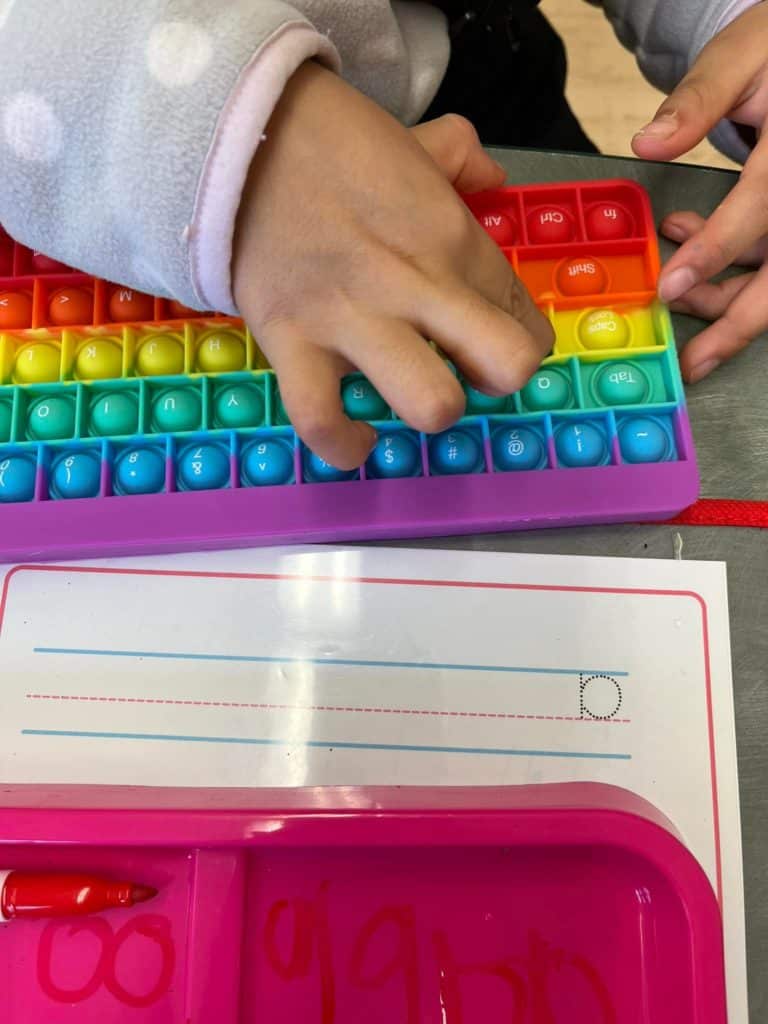
Wanda McQuabbie wants to make learning Indigenous languages easy and fun for everyone.
She’s been a teacher at Britt Public School for 20 years and was inspired by various teaching methods to create a program that focuses on the foundations of learning a language.
“When I saw the way that other languages were taught, I wished that we had the same resources to teach our language. One of the ways I saw English being taught to children was through a program called Jolly Phonics. It used very simple techniques, and I ended up doing a lot of research about how this can be used to teach the Anishinaabemowin language,” she explains.
Putting the Alphabet into Action
But it was a chance meeting with another teacher that took her ideas to the next level.
“The Anishinaabemowin program has been offered for a while now in Britt Public School in the Near North District School Board. Britt was actually the first school to offer the program. They recently hired a mobile teacher, and it’s her job to support teachers and help them get students more involved with learning the language,” she says.
“Her name is Megan Jeffers. After she showed me some of the tools and techniques she uses for teaching language, we really hit it off. She showed me a document about how to teach alphabet writing and how to move your mouth to pronounce those letters,” Wanda explains.
Working together, Wanda and Megan created the Anishinaabemowin Action Alphabet, which incorporates photos and videos to show students how to pronounce sounds and how to put them together to say words.
“Our language is very verb-based, we’re always moving. So, I connected that with the posters we made. One of our students was a model for the photos and videos that go along with each word. There’s nothing like this out there to teach our language,” Wanda says.
“Our language is very verb-based, we’re always moving. So, I connected that with the posters we made. One of our students was a model for the photos and videos that go along with each word. There’s nothing like this out there to teach our language,” Wanda says.
The document will be available online and as a hard copy, but the digital version includes the videos, and a song Wanda created specifically for teaching the alphabet.
“It’s one-of-a-kind, and I really think it’s going to help our Anishinaabemowin teachers and students,” she says.
It All Started With a Prophecy
“My late father, Alex Skead, is the reason why I became a Native language teacher. He actually gave me a prophecy when I was 12 years old. He said he could see a lot of schools screaming for Native language teachers. He went to residential school until grade 5. But he pushed his kids to stay in school and go as far as they could. Coming from a person who experienced residential school, I really took his words to heart,” she says.
Wanda’s journey towards becoming a language teacher continued when she went to university.
“I never knew how to write in the language until I went to university for the Native Language Instructors program. It was very scary seeing these big words, and I’d never seen a vowel chart before – it was very intimidating,” she explains.
Going through that experience helped her realize that the key to learning and teaching is making the content relatable, especially when teaching children.
“You have to get to their level. You have to act like them, be like them, or you won’t get their respect. You have to open up and be at their eye level, so that they’ll trust you. I try to keep up with what the popular toys are so that I can connect the language teachings with it in a way that makes it fun,” she says.

Capturing Culture and History
Looking to the future, Wanda says she wants to capture as much history as she can.
“Having a Resource Centre in our community is my dream. Our Elders hold our past and we need to capture that history and our language. I’m in the process of recording our Elders and that’s a huge job, especially since we only have a few left to talk to,” she says.
She says that passing down this knowledge is important for future generations.
“Having the ability to speak different languages, you see the world through different ways, and one of those ways is the Anishinaabe way. It’s important for our children to see themselves represented in schools and in the community through our language and culture,” says Wanda.
Advice for Learning Languages
If you’re interested in learning the Ojibwe language, Wanda has a few words of advice.
“We all learn in different ways. Don’t be scared. Listen with your ears, listen with your eyes, and listen with your heart. That’s what is going to help you understand the language because the language is alive. And always present your teacher with tobacco because you’re honouring that spirit of the language,” she says.

To learn more about Henvey Inlet Wind, click here!